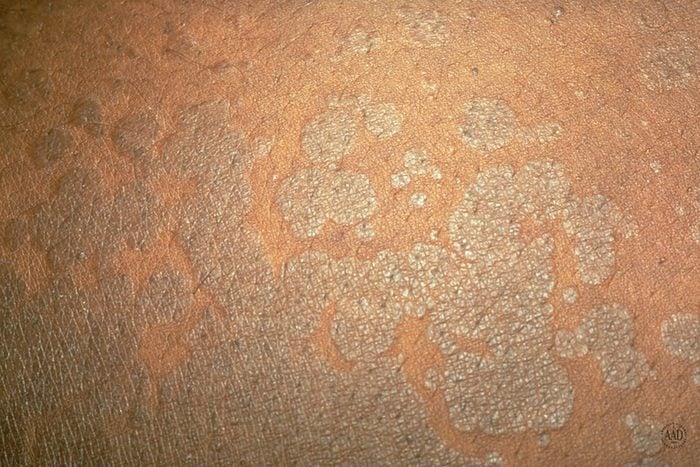
Tinea versicolor (aka pityriasis versicolor)
This condition is essentially a yeast infection that presents as white spots on the skin, says Michele Green, MD, a board-certified dermatologist in New York City. It occurs when yeast found naturally on the skin overgrow—and the spots can be white, pink, salmon, red, tan, or brown, the America Academy of Dermatology (AAD) points out. These spots may be dry, scaly itchy, and they tend to stand out more when you get a tan because the yeast prevents skin from tanning, says the AAD). Risks may include time spent in warm, muggy climates, excessive sweating, oily skin or a weakened immune system. To the rescue: Over-the-counter anti-fungal soaps and lotions.
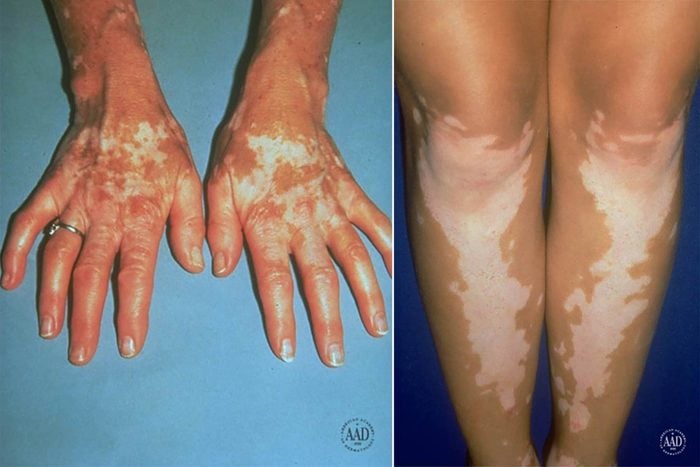
Vitiligo
Vitiligo often starts out as small hypo-pigmented or light, white spots, explains Seemal R. Desai, MD, FAAD, clinical assistant professor of dermatology at the University of Texas Southwestern Medical Center and the founder and medical director of Innovative Dermatology in Dallas, TX. “The advantage of catching this early is when the skin is just lighter and not fully depigmented or lost you have a higher chance of repigmentation,” says Dr. Desai, who is also the immediate past president of the Skin of Color Society. Fully 70 million people across the world have vitiligo, a disease that occurs when the immune system attacks its own melanocytes (the cells that give our skin its color).
To the rescue: Vitiligo treatment goals are to stabilize the disease process, and add pigment back into the skin. Certain steroid creams, as well as ointments containing tacrolimus or pimecrolimus (calcineurin inhibitors) may also be effective, Dr. Desi says. Light therapy is another option.
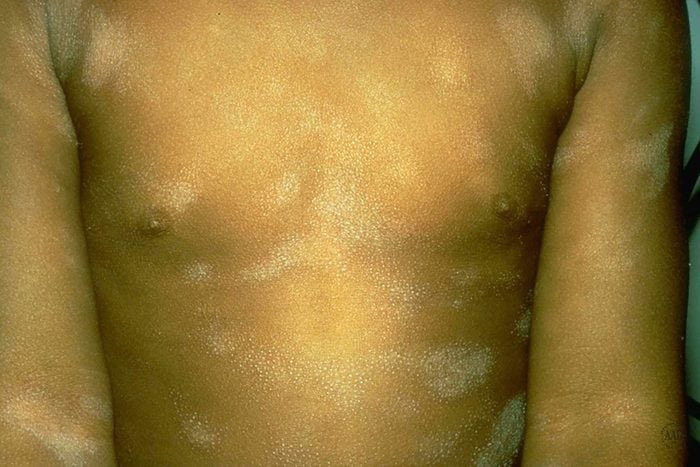
Pityriasis alba
This form of hypopigmentation, which affects children, tends to occur more commonly in the summer months. “The reason for this is that children’s skin tends to get tanner and darker in the summer when they’re out in the sun, and these hypopigmented patches, therefore, become more prominent because they don’t tan evenly,” Dr. Desai says. Treatment may surprise you: “In reality, these hypopigmented spots are a type of eczema and topical anti-inflammatory prescription often times helps to resolve this,” he says.
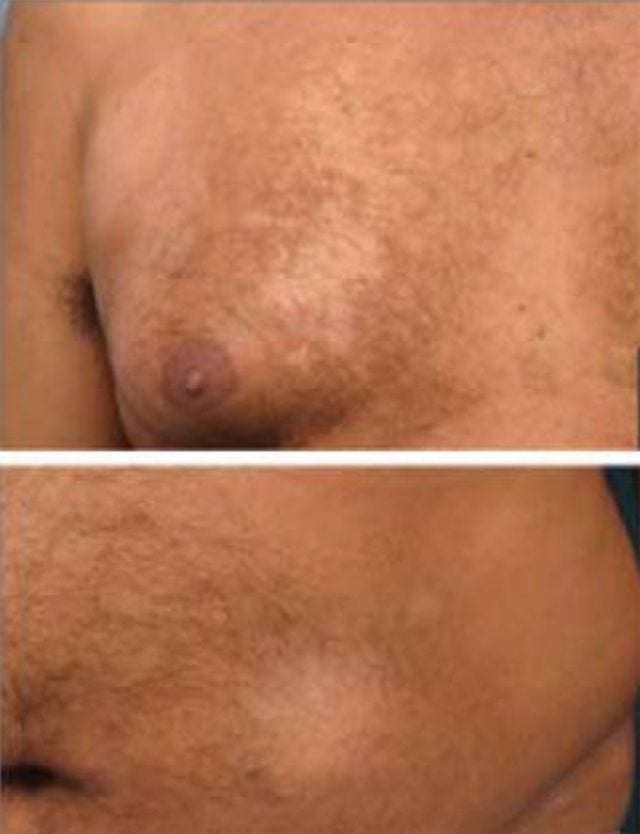
Hypopigmented mycosis fungoides (MF)
MF can be a serious skin condition, Dr. Desai says. It is a form of skin lymphoma or cancer. Symptoms are often mistaken for eczema, psoriasis or dermatitis, making it difficult to diagnose at first, he says. “Several biopsies may be needed to confirm the diagnosis. Symptoms include rash, skin lesions, patches, or itching. It typically happens more in darker skin-type individuals and particularly in children, which is why it’s very important to get anyone with hypopigmentation evaluated by a board-certified dermatologist,” Dr. Desai says. Photochemotherapy can treat MF. These are more surprising symptoms that turned out to be cancer.
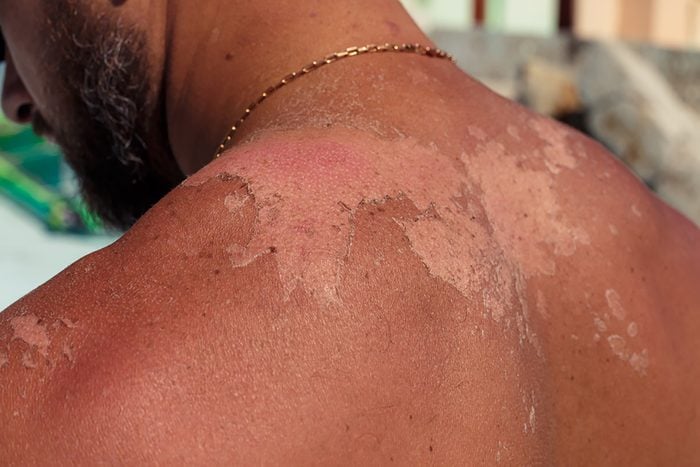
White spots on skin after sunburn
When we think of sunspots, you may think of brown or dark marks on sun-exposed skin, but there is such a thing as white sunspots on the skin after sunburn, says Maritza I. Perez, MD, a dermatologist in New Canaan, CT. “The white scattered spots on the skin are called Idiopathic Guttate Hypomelanosis and they are the result of sun-induced death of melanocytes.” Unfortunately, there’s no treatment for them, she says; the good news is that they’re not dangerous. Her tip: “Sun protection and avoidance is recommended,” she advises.
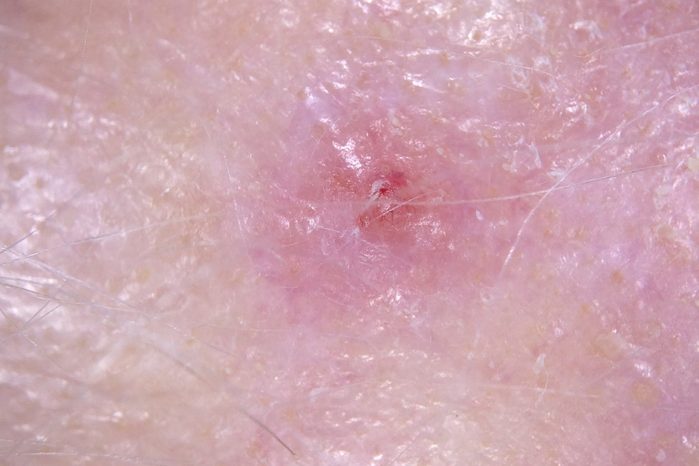
Amelanotic melanoma
Avoiding sunburn can go a long ways toward preventing amelanotic melanoma, a deadly type of skin cancer, so you might want to purchase a sunscreen that top dermatologists use on themselves. This type of melanoma may appear as clear or white spots on the skin, according to the Skin Cancer Foundation. Regular skin checks by a dermatologist can help catch skin cancer early when it is in its most treatable form. “Use sunscreen with an SPF of 30 or higher that blocks both ultraviolet B and A rays,” advises Dr. Green.
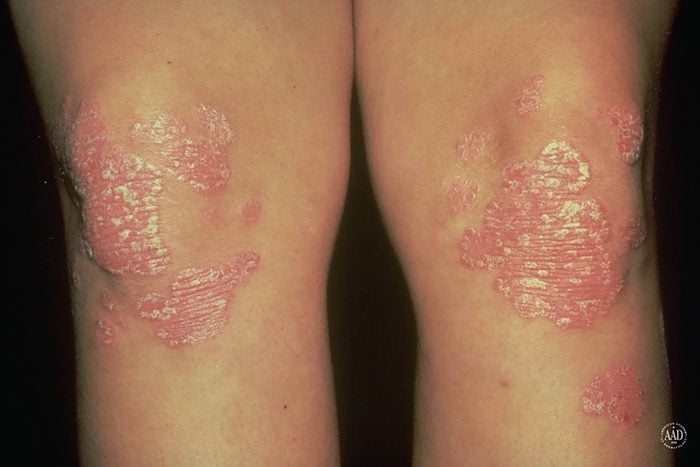
Psoriasis
Sufferers are desperate for psoriasis remedies that can ease symptoms. Psoriasis may be a cause of white spots on the skin as patches can be scaly, which can look white, explains psoriasis expert Jerry Bagel, MD, of Windsor Dermatology in Windsor, NJ. If you have psoriasis, your skin grows at an abnormally fast rate, resulting in the buildup of psoriasis lesions or patches, reports the AAD. Doctors may prescribe topical ointments, steroids, and anti-inflammatory drugs.

